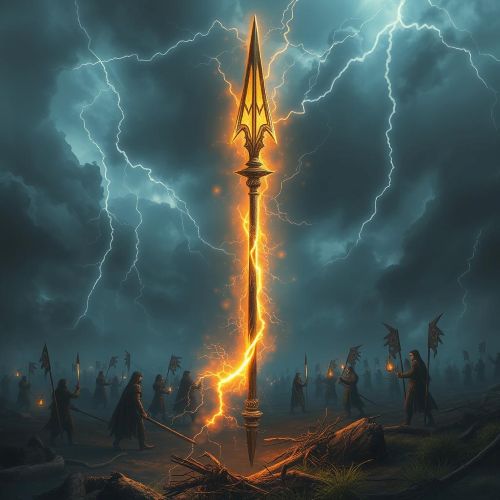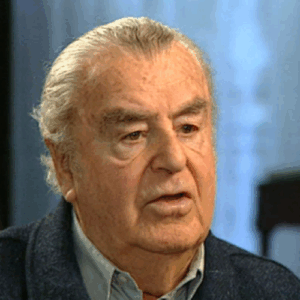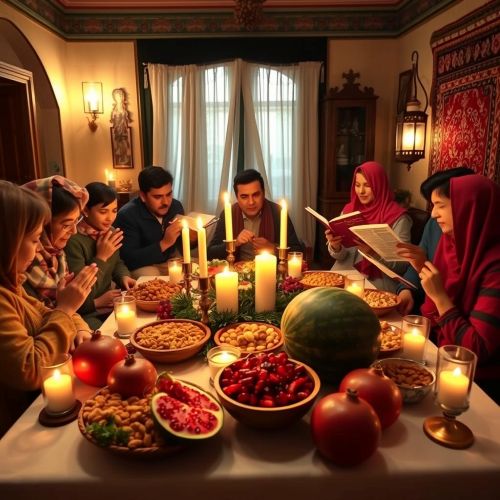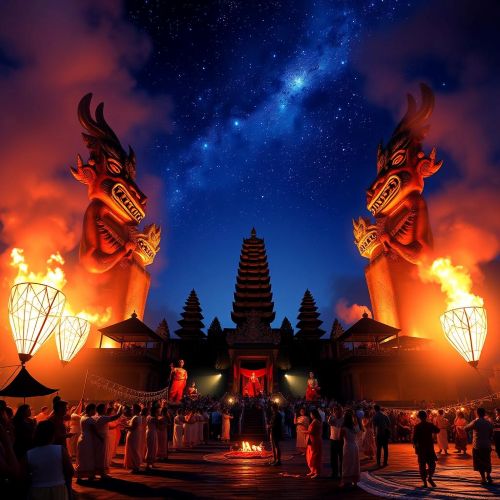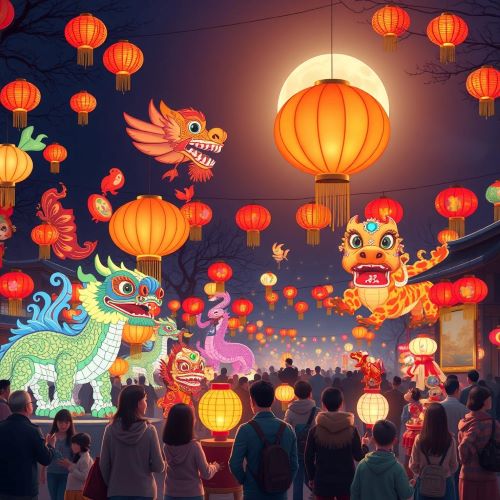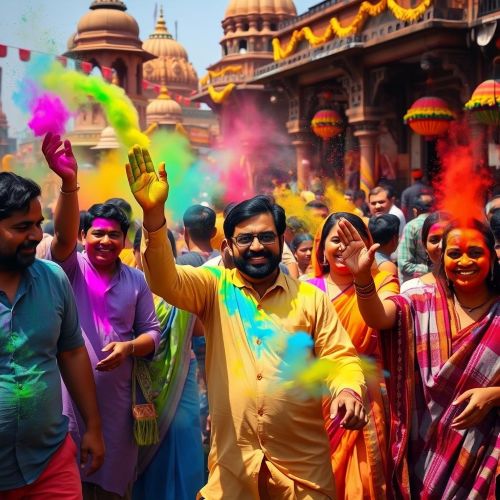Nowroz : Persian New Year
At a glance
| Description | |
|---|---|
| Location | Central and South Asia |
| Country | Iran, Tajikistan, Uzbekistan, Kazakhstan, Kyrgyzstan, Turkmenistan, India, Afghanistan |
| Dedicated To | King Jamshid, Ahura Mazda |
| Duration | 13 days |
| Time of Year | March |
Introduction
Nowroz, meaning “new day” in Persian, marks the start of the Persian New Year and coincides with the spring equinox, usually falling between March 19 and 22. Celebrated for more than 3,000 years, Nowroz is much more than a seasonal change; it is a deeply rooted cultural, spiritual, and historical celebration. Though it originated in Iran, Nowroz has spread across borders and ethnic lines, with over 300 million people observing it globally. It is a time of joy, family reunions, and fresh beginnings—representing not just the renewal of nature but the inner transformation of the self.
Connection with Mythology
The mythical origins of Nowroz are intricately linked to the ancient Iranian worldview, particularly as portrayed in the Shahnameh, Iran’s national epic. According to the legend, King Jamshid rescued humanity from a deadly winter. He fashioned a dazzling throne and ascended to the skies, his brilliance matching the sun. The people declared that radiant moment as the first day of the new year, thus creating the tradition of Nowroz.
This myth isn’t merely symbolic but reflects the Zoroastrian emphasis on the cyclical nature of time, duality of good and evil, and harmony with the natural world. Zoroastrianism, one of the earliest monotheistic religions, held seasonal festivals to mark cosmic shifts, and Nowroz was among the most important. Ancient scholars such as Al-Biruni and Gardizi documented these beliefs, reinforcing Nowroz’s spiritual dimension. The festival survived empires and religions, evolving yet retaining its connection to light, truth, and renewal.
During the Achaemenid period, even though inscriptions don’t explicitly mention Nowroz, the grandeur of Persepolis suggests the celebration’s influence. Later dynasties like the Sassanids and Abbasids formalized its observance in royal courts. The festival’s persistence through centuries and conquests speaks to its mythological and cultural strength, linking it forever with stories of kings, cosmic battles, and divine harmony.
Main Activities
Nowroz is a rich, 13-day celebration filled with rituals that emphasize purification, rebirth, and unity. The lead-up to the new year begins with house cleaning, a tradition known as khaneh tekani, symbolizing the clearing out of negativity. New clothes are bought, flowers are arranged, and homes are adorned in anticipation.
At the heart of the celebration lies the Haft-Sin table, a symbolic arrangement featuring seven items beginning with the Persian letter “S”. Each item holds its own meaning—sabzeh (sprouted greens) for growth, samanu (wheat pudding) for abundance, senjed (oleaster) for love, seer (garlic) for protection, seeb (apple) for health, somāq (sumac) for sunrise, and serkeh (vinegar) for wisdom. These symbols come together as a prayer for a prosperous year ahead. Many families also add mirrors, goldfish, candles, and sacred texts like the Avesta or Shahnameh to personalize the display.
The festivities begin with Chaharshanbe Suri, celebrated on the eve of the last Wednesday before Nowroz. Bonfires are lit, and people leap over the flames to purify themselves, chanting to exchange their illness and sorrow for health and happiness. The fire rituals harken back to ancient Zoroastrianism and continue to burn brightly in modern cities and rural villages alike.
During the 13 days, families pay visits to relatives, host parties, and exchange gifts. Traditional dishes like sabzi polo ba mahi (herbed rice with fish) and sweets like nan-e nokhodchi are shared in abundance. On the final day, known as Sizdah Bedar, families head outdoors for a picnic, letting go of the past by releasing their sabzeh into rivers, symbolically discarding the old and inviting the new.
Cultural figures also play a role. Haji Firuz, dressed in red with soot-covered cheeks, sings and dances through the streets, spreading joy. In Afghanistan, characters like Kampirak offer gifts and good cheer. These figures embody the spirit of Nowroz: joy, giving, and cultural identity.
Importance in Cultural History
Nowroz has remained a cornerstone of Iranian identity through countless transitions in political, religious, and social life. It has not only endured but adapted—retaining its essence while taking on new layers of meaning in different historical contexts. Under the Abbasid Caliphate and later dynasties like the Buyids and Seljuqs, it was celebrated with courtly ceremonies, music, poetry, and feasts. Omar Khayyam even used the event to help establish the solar-based Jalali calendar, aligning the new year with astronomical precision.
During the Mongol invasion and the spread of Islam, Nowroz continued to be celebrated, absorbing Islamic elements while preserving its pre-Islamic roots. It became a symbol of resilience and cultural pride. Even regimes that sought to suppress it, such as the Taliban in Afghanistan or radical factions in post-revolution Iran, failed to erase its presence.
In contemporary times, Nowroz’s cultural and historical value has been formally recognized. In 2010, UNESCO included Nowroz in its List of the Intangible Cultural Heritage of Humanity, and the United Nations declared March 21 the International Day of Nowruz. These recognitions highlight its universal themes of peace, unity, and ecological balance.
Need a place to stay? Book your hotel room now!
International Appeal
Though Nowroz began as a Persian tradition, its message resonates far beyond Iran’s borders. Countries across Central and South Asia, the Caucasus, and parts of the Middle East have woven Nowroz into their cultural fabric. Afghanistan celebrates it with kite flying and Haft Mewa, a mix of dried fruits soaked in syrup. Azerbaijan adds public dances, folk music, and sporting events to the festivities. In India, especially among the Parsi community, Jamshedi Navroz includes temple prayers and feasts featuring dhansak and patra ni machhi.
The festival also holds political and cultural significance among the Kurdish people, especially in Turkey and Syria, where it has long been a symbol of resistance and identity. Despite state crackdowns, Kurds gather in large numbers to light fires and dance in celebration of Nowroz, asserting their cultural rights and autonomy.
In Western countries with large Iranian or Central Asian communities, Nowroz has become a multicultural celebration. Cities like Los Angeles, Toronto, and London host public concerts, exhibitions, and parades showcasing traditional music, dance, and cuisine. Events like Stockholm’s Eldfesten draw thousands, turning Nowroz into a global celebration of Persian culture and heritage.
Even political leaders have embraced the holiday. In 2024, California’s governor officially proclaimed March 19 as Nowroz Day, acknowledging the vibrant contributions of the Persian-speaking diaspora. Whether in public squares or family living rooms, Nowroz today symbolizes a shared yearning for renewal, connection, and peace.
Source
Ghai, R. (2025, March 20). Nowruz: Celebrating the Renewal of Nature and New Beginnings. Down to Earth. https://www.downtoearth.org.in
Mehraby, R. (2015). Nowruz History; Mythology, Celebrations. Destination Iran. https://www.destinationiran.com
Wikipedia contributors. (2025). Nowruz. Wikipedia. https://en.wikipedia.org/wiki/Nowruz
Britannica Editors. (2025). Nowruz Festival, History, Practice, & Facts. Encyclopaedia Britannica. https://www.britannica.com
Arora, S. (2025, March 21). International Nowruz Day 2025. Adda247. https://currentaffairs.adda247.com
History.com Editors. (2025, March 2). Nowruz – Persian New Year, Origins & Traditions. History. https://www.history.com
Frequently Asked Questions
Lorem ipsum dolor sit amet, consectetur adipiscing?
Lorem ipsum dolor sit amet, consectetur adipiscing elit. Praesent convallis vestibulum justo, ac tincidunt nunc vehicula quis. Nullam id dolor quis orci malesuada feugiat. Curabitur aliquet libero at urna ullamcorper, ac ultricies nulla dapibus.
Lorem ipsum dolor sit amet, consectetur adipiscing?
Lorem ipsum dolor sit amet, consectetur adipiscing elit. Praesent convallis vestibulum justo, ac tincidunt nunc vehicula quis. Nullam id dolor quis orci malesuada feugiat. Curabitur aliquet libero at urna ullamcorper, ac ultricies nulla dapibus.
Lorem ipsum dolor sit amet, consectetur adipiscing?
Lorem ipsum dolor sit amet, consectetur adipiscing elit. Praesent convallis vestibulum justo, ac tincidunt nunc vehicula quis. Nullam id dolor quis orci malesuada feugiat. Curabitur aliquet libero at urna ullamcorper, ac ultricies nulla dapibus.
Lorem ipsum dolor sit amet, consectetur adipiscing?
Lorem ipsum dolor sit amet, consectetur adipiscing elit. Praesent convallis vestibulum justo, ac tincidunt nunc vehicula quis. Nullam id dolor quis orci malesuada feugiat. Curabitur aliquet libero at urna ullamcorper, ac ultricies nulla dapibus.
Lorem ipsum dolor sit amet, consectetur adipiscing?
Lorem ipsum dolor sit amet, consectetur adipiscing elit. Praesent convallis vestibulum justo, ac tincidunt nunc vehicula quis. Nullam id dolor quis orci malesuada feugiat. Curabitur aliquet libero at urna ullamcorper, ac ultricies nulla dapibus.


